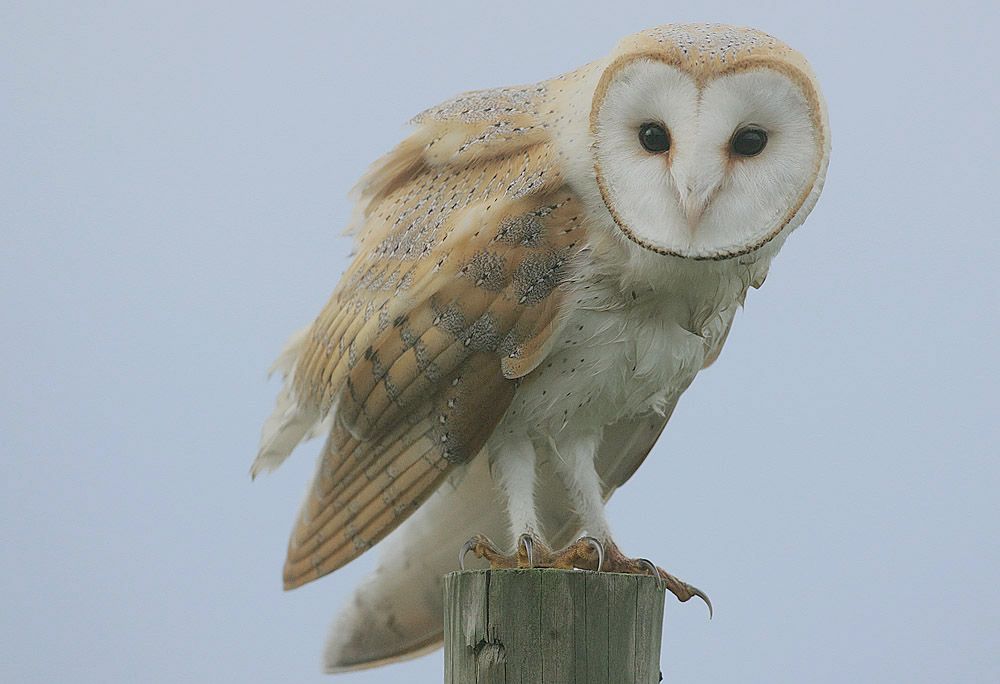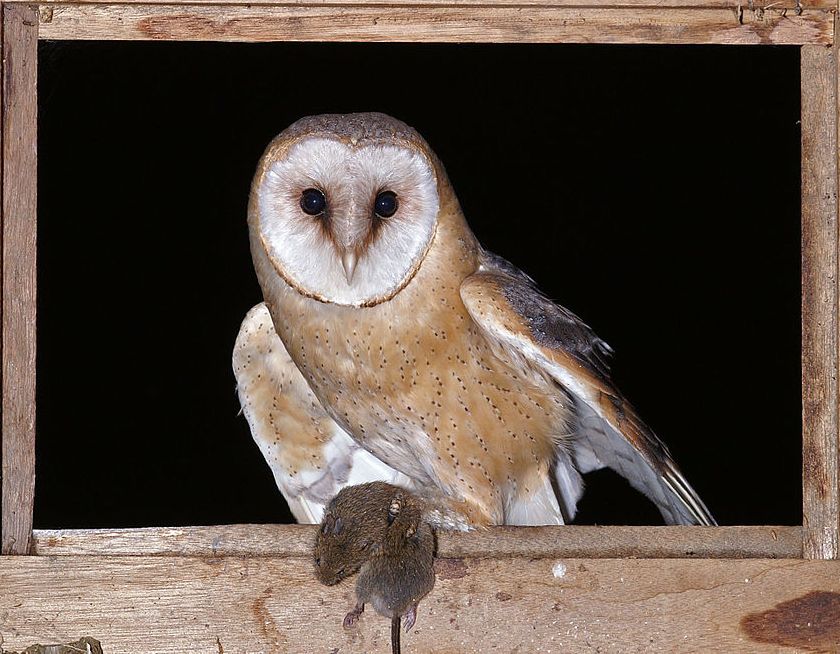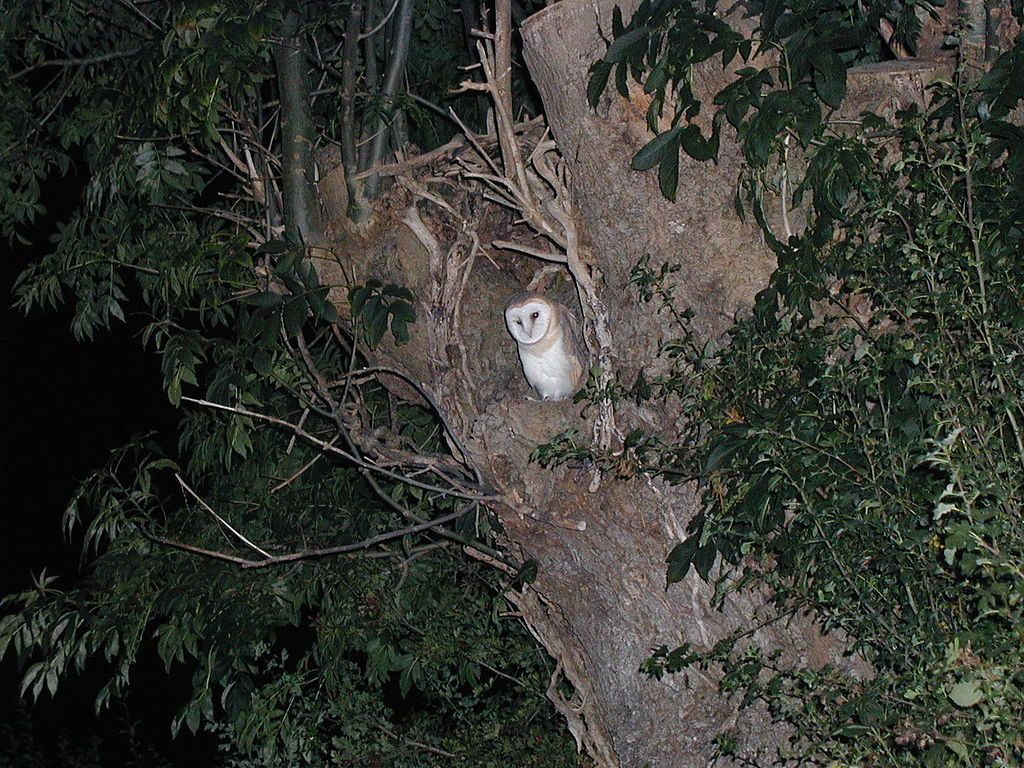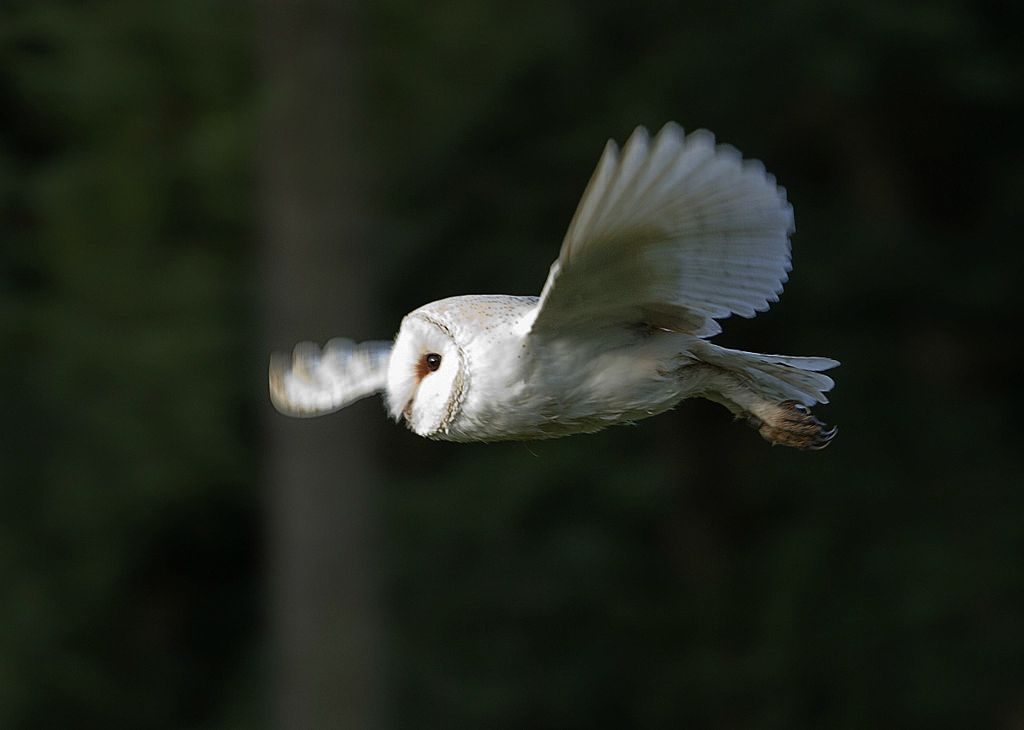
Most owl species have camouflage-colored bellies, but most barn owls (Tyto alba) do not. Though their backs blend into their surroundings, the majority have brilliant white faces, bellies, underwings and legs. The rest are better camouflaged in rusty red, below.

The white color stands out in moonlight but is this visibility a disadvantage? Does the white owl’s prey see it coming and escape? Are reddish owls more successful on moonlit nights? Researchers ran tests to find out.

In a barn owl study in Switzerland, scientists have been tracking plumage, prey availability, moon phases and breeding success for over 20 years. When they correlated moon phase with hunting success, they found that reddish barn owls have lower success on full moon nights than white ones.
This seemed very odd so they set up an experiment with full moon lighting and two taxidermied owls posed in flight — one white, one reddish. When a vole was placed in the “moonlit” room and presented with a flying (stuffed) owl, it froze in place for an extra 5 seconds when it saw the white one. Those 5 seconds were just enough time for the white owl to pounce. The reddish owl was out of luck. Apparently the glowing white plumage has its advantages.
White barn owls are stunning in moonlight.

Read more at “Moonlight Helps White Barn Owls Stun Their Prey” in Smithsonian Magazine.
(photos from Wikimedia Commons; click on the captions to see the originals)
That was interesting
Aesthetic arrest no doubt.
Oh my gosh. So interesting. Thanks Kate!